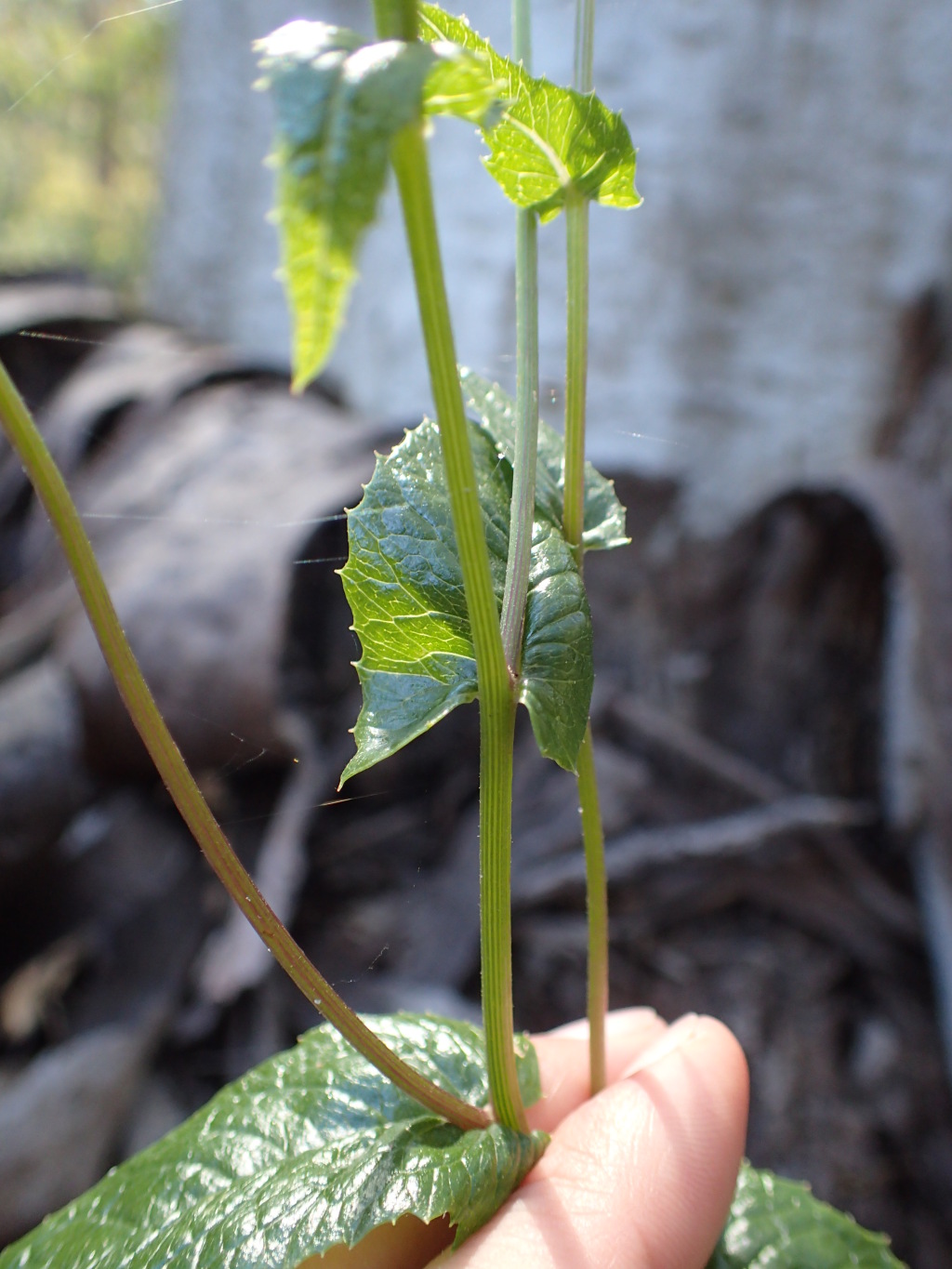Senecio linearifolius var. latifolius
I.Thomps.Plants not glaucous. Upper-stem leaves narrow-elliptic or lanceolate, to 14 cm long, with l:w ratio 1.5–5(–6); base broad-cuneate, truncate, or cordate; auricles sometimes present, usually continuous with lamina, entire or with a much smaller second lobe present; margin denticulate or dentate, minutely recurved, teeth usually crowded; lower surface glabrous or nearly so, rarely cobwebby; secondary venation usually sharply raised; tertiary venation usually clearly discernible. Involucre 2.5–4.0 mm long, 1.0–1.6 mm diam.; bracts 8–11. Florets 12–19; ray florets 4–5; disc florets 8–14. Cypselas 1.5–2.0 mm long, papillose-hairy in bands. Flowers Nov.–Apr.
VRiv, CVU, NIS, EGL, EGU, HSF, HNF, Strz, MonT, VAlp. Also NSW, ACT, Tas. In Victoria throughout the ranges of the east, west to the Dandenongs, usually in forests and woodlands over 1000 m altitude.
At the lowest altitudes of occurrence this variety intergrades with S. linearifolius var. denticulatus (Thompson 2004b).
 Spinning
Spinning

